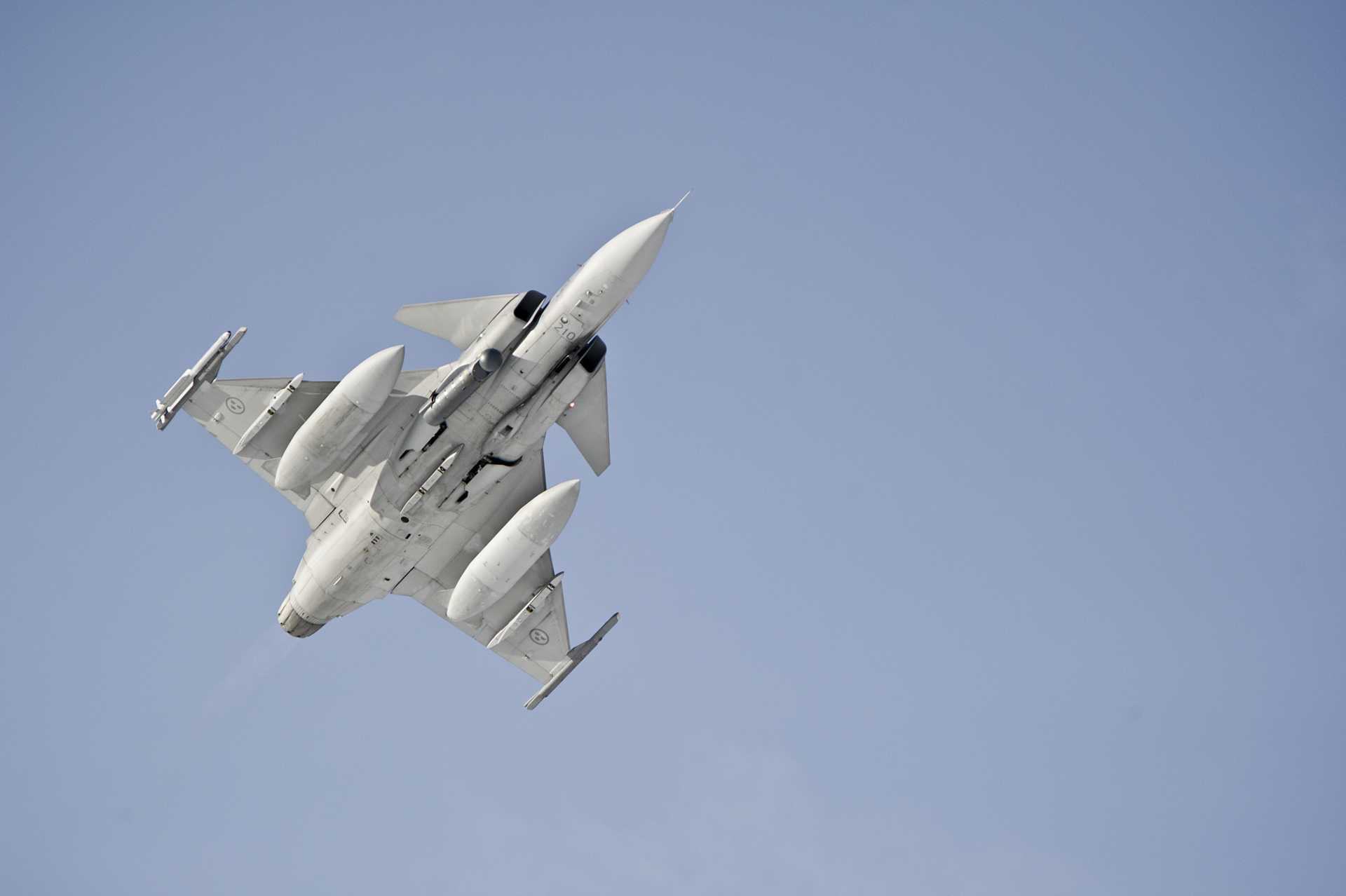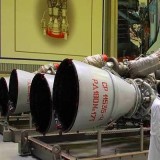Breaking News: Sweden requests Parliament approval to sell up to 12 Gripen E/F fighter jets to Peru

{loadposition bannertop}
{loadposition sidebarpub}
On April 10, 2025, the Swedish government included in its spring 2025 budget proposition a request to authorize a government-to-government agreement with Peru for the sale of up to 12 JAS 39 Gripen E/F multirole fighter aircraft and associated air defense systems. The request outlines Sweden’s intention to respond to a formal inquiry from the Peruvian government, which has stated its preference for such an intergovernmental agreement structure. If approved by the Riksdag, the Swedish Parliament, the Swedish state would be responsible for the procurement and delivery of the aircraft and systems, with the total costs expected to be covered by the revenues from the sale.Follow Army Recognition on Google News at this link
If concluded, a Gripen E/F acquisition by Peru would represent the fighter’s third confirmed or potential order in Latin America, following Brazil and Colombia. (Picture source: Swedish MoD)
This proposed sale is part of a broader export strategy developed by Sweden and Saab AB to expand their defense industry presence in Latin America, as well as in Canada. Following Brazil’s ongoing Gripen E program and Colombia’s recent selection of the platform to replace its IAI Kfir fleet, Sweden is now seeking to position the Gripen as a competitive option in Peru’s fighter jet modernization effort. According to the official proposition, the government’s involvement aims to align with Peru’s procurement preferences while opening new markets for Swedish defense systems. The offer includes not only the fighter aircraft but also unspecified air defense systems, which may reflect a broader package tailored to meet the Peruvian Air Force’s operational needs.
Saab’s regional industrial strategy has included long-term cooperation with Brazil, particularly through the establishment of a local production line in Gavião Peixoto and partnerships with Embraer. The model applied in Brazil is also being considered for replication in Peru, especially if the government-to-government agreement moves forward. Saab CEO Micael Johansson’s presence at a recent event in Colombia alongside President Gustavo Petro, where Colombia confirmed its selection of the Gripen, underscores the company’s intent to reinforce its position in the region with a combination of political, industrial, and logistical support mechanisms.
In October 2024, Peruvian Defense Minister Walter Enrique Astudillo Chávez publicly confirmed plans to procure 24 new multirole fighters to replace the aging MiG-29 and Mirage 2000P fleets. The Gripen E/F is one of three shortlisted platforms, along with the Lockheed Martin F-16V Block 70 and the Dassault Rafale F4. To finance the acquisition of these new fighters, Peru has submitted a request for a loan of 7.58 billion soles (approximately USD 2 billion) from the Banco de la Nación. The funding would cover the first phase of the program, including the procurement of 12 aircraft, which corresponds to the proposed Swedish government-to-government sale.
Peru’s defense acquisition planning emphasizes industrial cooperation and the establishment of domestic production capabilities. This includes provisions for technology transfer and local co-production agreements with the selected supplier. Saab’s previous implementation of such measures in Brazil, where Brazilian industry played a key role in both production and development of the two-seat Gripen F, may be considered relevant in the Peruvian context. However, no formal terms regarding industrial participation have yet been disclosed. The Swedish government’s proposal to Peru includes not only the Gripen E/F aircraft but also associated air defense systems. While specific systems have not been identified, this component is included in response to operational and strategic requirements of the Peruvian Air Force (Fuerza Aérea del Perú, FAP).
Swedish government’s proposal to Peru includes not only the Gripen E/F aircraft but also associated air defense systems, although specific systems have not been identified. (Picture source: Swedish MoD)
If concluded, a Gripen E/F acquisition by Peru would represent the platform’s third confirmed or potential order in Latin America, following Brazil and Colombia. Saab has actively positioned the Gripen as a cost-effective and interoperable alternative to U.S. and French platforms. The company’s export strategy integrates local industrial participation as a means of strengthening competitiveness and addressing buyer requirements for sovereign capabilities.
The Gripen platform was first introduced in the 1990s, evolving through several versions, including the Gripen A/B, C/D, and the current Gripen E/F generation. The Gripen E was first flown in 2017 and incorporates significant upgrades over previous versions. These include increased internal fuel capacity, a more powerful General Electric F414G engine, and a modular avionics system that allows for faster updates and software changes. It also features enhanced survivability systems and network-centric warfare capabilities.
The Gripen E is equipped with the Raven ES-05 AESA radar and an internal electronic warfare suite designed for both self-protection and electronic attack roles. It supports a wide range of weapons including Meteor and IRIS-T air-to-air missiles, as well as air-to-ground munitions such as the GBU-49 and Taurus KEPD 350 cruise missile. The aircraft is also capable of reconnaissance missions and battlefield data fusion. The two-seat Gripen F is being developed primarily for Brazil, which refers to the platform as the F-39E/F.
Brazil initially ordered 36 aircraft and has since increased that number to 40, with current negotiations underway for 26 additional aircraft. Colombia’s planned acquisition of 24 Gripen E units further illustrates the platform’s growing footprint in South America. If Peru proceeds with the Gripen, the regional fleet would exceed 80 units, potentially supporting joint training, maintenance, and logistics cooperation among users.

{loadposition bannertop}
{loadposition sidebarpub}
On April 10, 2025, the Swedish government included in its spring 2025 budget proposition a request to authorize a government-to-government agreement with Peru for the sale of up to 12 JAS 39 Gripen E/F multirole fighter aircraft and associated air defense systems. The request outlines Sweden’s intention to respond to a formal inquiry from the Peruvian government, which has stated its preference for such an intergovernmental agreement structure. If approved by the Riksdag, the Swedish Parliament, the Swedish state would be responsible for the procurement and delivery of the aircraft and systems, with the total costs expected to be covered by the revenues from the sale.
Follow Army Recognition on Google News at this link
If concluded, a Gripen E/F acquisition by Peru would represent the fighter’s third confirmed or potential order in Latin America, following Brazil and Colombia. (Picture source: Swedish MoD)
This proposed sale is part of a broader export strategy developed by Sweden and Saab AB to expand their defense industry presence in Latin America, as well as in Canada. Following Brazil‘s ongoing Gripen E program and Colombia’s recent selection of the platform to replace its IAI Kfir fleet, Sweden is now seeking to position the Gripen as a competitive option in Peru’s fighter jet modernization effort. According to the official proposition, the government’s involvement aims to align with Peru’s procurement preferences while opening new markets for Swedish defense systems. The offer includes not only the fighter aircraft but also unspecified air defense systems, which may reflect a broader package tailored to meet the Peruvian Air Force’s operational needs.
Saab’s regional industrial strategy has included long-term cooperation with Brazil, particularly through the establishment of a local production line in Gavião Peixoto and partnerships with Embraer. The model applied in Brazil is also being considered for replication in Peru, especially if the government-to-government agreement moves forward. Saab CEO Micael Johansson’s presence at a recent event in Colombia alongside President Gustavo Petro, where Colombia confirmed its selection of the Gripen, underscores the company’s intent to reinforce its position in the region with a combination of political, industrial, and logistical support mechanisms.
In October 2024, Peruvian Defense Minister Walter Enrique Astudillo Chávez publicly confirmed plans to procure 24 new multirole fighters to replace the aging MiG-29 and Mirage 2000P fleets. The Gripen E/F is one of three shortlisted platforms, along with the Lockheed Martin F-16V Block 70 and the Dassault Rafale F4. To finance the acquisition of these new fighters, Peru has submitted a request for a loan of 7.58 billion soles (approximately USD 2 billion) from the Banco de la Nación. The funding would cover the first phase of the program, including the procurement of 12 aircraft, which corresponds to the proposed Swedish government-to-government sale.
Peru’s defense acquisition planning emphasizes industrial cooperation and the establishment of domestic production capabilities. This includes provisions for technology transfer and local co-production agreements with the selected supplier. Saab’s previous implementation of such measures in Brazil, where Brazilian industry played a key role in both production and development of the two-seat Gripen F, may be considered relevant in the Peruvian context. However, no formal terms regarding industrial participation have yet been disclosed. The Swedish government’s proposal to Peru includes not only the Gripen E/F aircraft but also associated air defense systems. While specific systems have not been identified, this component is included in response to operational and strategic requirements of the Peruvian Air Force (Fuerza Aérea del Perú, FAP).

Swedish government’s proposal to Peru includes not only the Gripen E/F aircraft but also associated air defense systems, although specific systems have not been identified. (Picture source: Swedish MoD)
If concluded, a Gripen E/F acquisition by Peru would represent the platform’s third confirmed or potential order in Latin America, following Brazil and Colombia. Saab has actively positioned the Gripen as a cost-effective and interoperable alternative to U.S. and French platforms. The company’s export strategy integrates local industrial participation as a means of strengthening competitiveness and addressing buyer requirements for sovereign capabilities.
The Gripen platform was first introduced in the 1990s, evolving through several versions, including the Gripen A/B, C/D, and the current Gripen E/F generation. The Gripen E was first flown in 2017 and incorporates significant upgrades over previous versions. These include increased internal fuel capacity, a more powerful General Electric F414G engine, and a modular avionics system that allows for faster updates and software changes. It also features enhanced survivability systems and network-centric warfare capabilities.
The Gripen E is equipped with the Raven ES-05 AESA radar and an internal electronic warfare suite designed for both self-protection and electronic attack roles. It supports a wide range of weapons including Meteor and IRIS-T air-to-air missiles, as well as air-to-ground munitions such as the GBU-49 and Taurus KEPD 350 cruise missile. The aircraft is also capable of reconnaissance missions and battlefield data fusion. The two-seat Gripen F is being developed primarily for Brazil, which refers to the platform as the F-39E/F.
Brazil initially ordered 36 aircraft and has since increased that number to 40, with current negotiations underway for 26 additional aircraft. Colombia’s planned acquisition of 24 Gripen E units further illustrates the platform’s growing footprint in South America. If Peru proceeds with the Gripen, the regional fleet would exceed 80 units, potentially supporting joint training, maintenance, and logistics cooperation among users.






